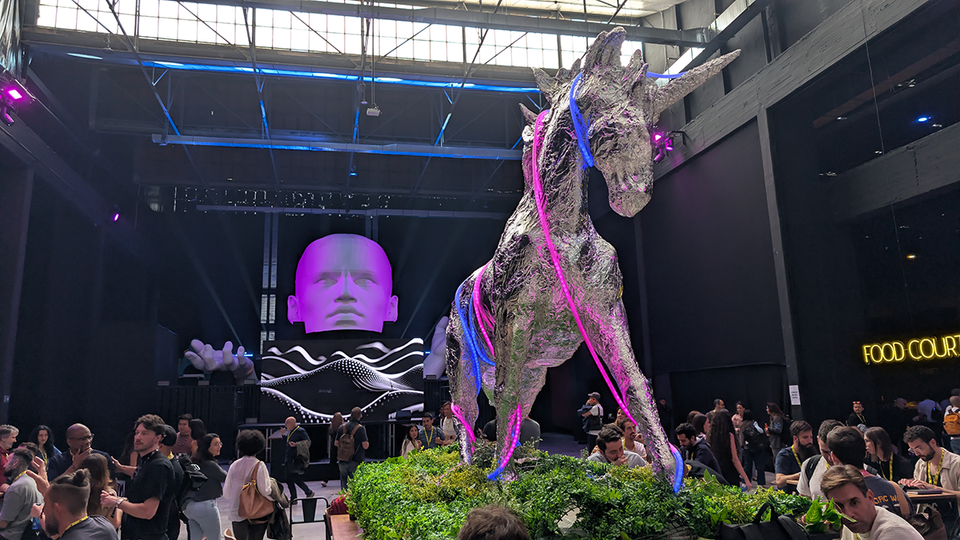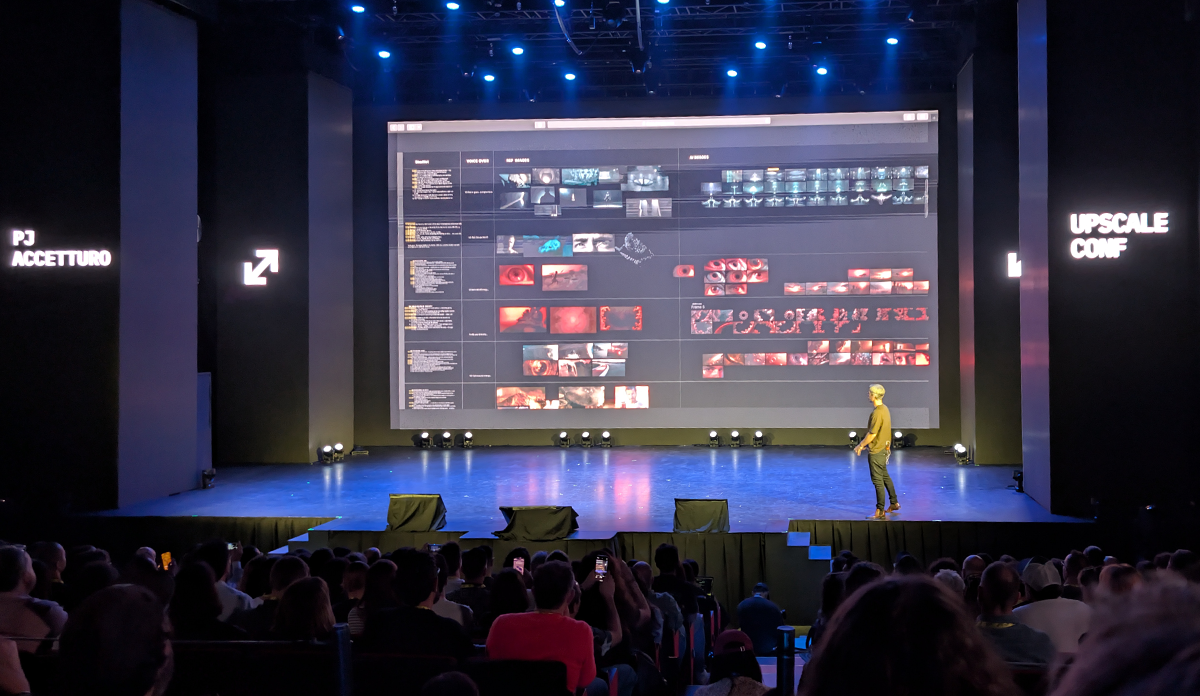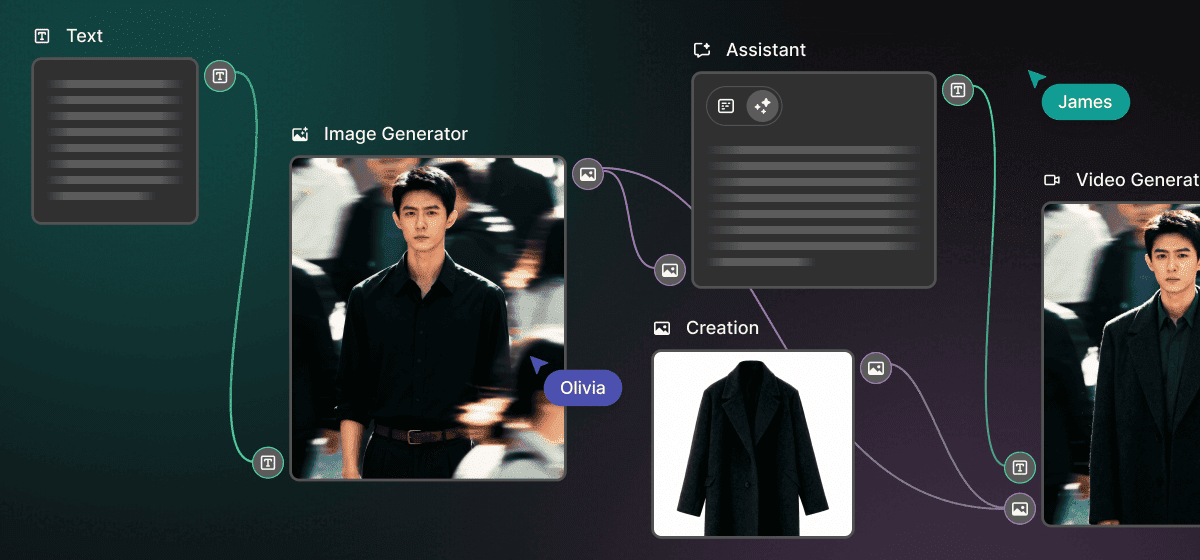We're All Creative Directors Now: 10 Takeaways from Freepik's Upscale Conf

Last week, I attended the two-day Upscale Conf in Málaga, Spain, hosted by Freepik.
Freepik has completely reinvented itself over the past year; with its clean interface and access to leading models, it's becoming a favorite tool for many AI creatives. The conference was a whirlwind 48 hours of talks, workshops, and unicorn sculptures.
Here are my top takeaways from the event:
1. People from so many Industries
For a conference targeting AI creatives on the Freepik platform, I was surprised by the diversity of professional backgrounds. While most attendees were from Europe, the creative space alone included filmmakers, editors, VFX specialists, 3D modelers, and marketing pros. Beyond that, I met people from architecture, finance, and fashion. It’s clear generative AI's creative potential is touching nearly every industry, and it's exciting to see a common language evolving that connects us all.
2. Visual Storytelling Has Always Been in Flux
One of my favorite presentations was by Cesar Pesquera & Ivan Garriga. They took us on a journey through 100+ years of visual storytelling transformations: from the first photograph to the silent era of film, talkies, and the birth of montage. AI may feel different, but disruption and adjustment to new forms have always been the constant, not the exception, in visual storytelling.
3. We Are All Creative Directors Now
People from all fields are using these tools to execute clearer creative visions than ever before. As barriers to entry lower, we may be ushering in a new, empowering auteur era. But it’s important to note: no amount of generative AI will make a bad story great. The best examples at the conference still had carefully crafted stories and passionate teams executing at a high level. The input matters; those with original ideas, vision and intention will find the most utility in these tools.
4. The AI Hate is Real
Several speakers shared some of the vitriol they’ve received online for creating with AI. I understand the fear and uncertainty about jobs. We are in uncharted territory. But the cruelty levied at creatives trying to figure this out seems extreme.
Generative AI is already in nearly every Adobe product and traditional creative tool. I for one would rather have the best and brightest developing ethical, constructive approaches than leave this tech to AI slop farms.
5. The Phases of Production Are Merging
We're seeing storyboards and high-fidelity creative decks come together in real time. In my last post I highlighted how my traditional two-column script format has evolved into a three column approach with AI generated storyboards.

- PJ Ace (Genre.ai) showed a similar approach for his client workflow: a large Figma board with the script, prompts, and reference images.
- AI educator Rourke Heath ran a workshop on storyboarding with sketches first to avoid locking in style too early.
- And in another workshop, Stephane Benini and Bruno Detante of Goro showed how they used images from early creative briefs in the final product.
The lines between pre-production, production, and post-production are blurring as we are able to more closely communicate a creative vision at each stage of the process.
6. Nodes Are All the Rage

The big drop from Freepik at the conference was “Spaces,” their new node-based workflow approach. Nodes have long been part of 3D and VFX, allowing you to tweak one part of a workflow without starting from scratch.
ComfyUI is the major open-source node platform (often called “Nuke for AI”), but its barrier to entry is high. Sites like Freepik and Weavy are now creating user-friendly interfaces that offer some of the customization and control that make ComfyUI so popular with serious professionals.
7. So Many Models, Only a Few Clear Favorites
Based on my conversations, here were the anecdotal favorite models:
- Images: Seedream 4k is the current favorite for realism. Google’s Nano Banana is also very popular, especially for editing. Many still use Midjourney for cinematic visuals (though it’s not in Freepik).
- Video: Kling was the favorite in many presentations. Veo 3.1 is also a favorite. Seedance Pro is popular, but with less enthusiasm than people have for their image model.
8. A Simple Structure for Better Image Prompts
A workshop by Freepik’s own AI creative consultant Elena Berjillos offered great insights on prompt structure.
Suggested prompt structure:
1. Camera/Shot type → “Close-up”, “Medium shot”, “Top-down view”...
2. Style/Aesthetic → minimalist, surreal, editorial…
3. Subject → main object/person
4. Action/Context → what’s happening
5. Environment → background, location, mood…
6. Lighting → cinematic lighting, studio light, soft shadows…
7. Effects → bokeh, tilt-shift, motion blur…
Example: A close-up shot of a minimalistic ceramic coffee cup with steam rising. It’s placed on a saucer, on a clean marble surface. Soft natural lighting with subtle shadows, slight bokeh in the background.
9. A JSON tip for video prompts
I was surprised the same consultant encouraged JSON for video prompts. I've been skeptical of JSON prompts. JSON is common in web development, but why should a diffusion model prefer it over any other well-organized prompt? I plan to test her JSON approach against my typical style to see if it improves prompt adherence. If you’re curious, here was her suggested structure:
"prompt": "Describe only the action or gesture, keeping it simple and direct. Focus on what moves or changes in the shot.",
"camera_motion": "Define one main camera move (Static shot, Dolly zoom, Tracking shot, Overhead pan, Orbit shot…).",
"techniques": ["List 2–4 narrative or cinematic terms (e.g. slow motion, micro-expression, match cut, POV tracking…)"],
"style": "Define the overall visual tone (cinematic minimalism, surreal realism, documentary, premium commercial…).",
"atmosphere": "Capture the mood or emotional context (tense, playful, intimate, unsettling, uplifting…)."
}
10. AI and Reality, Hand in Hand
We're in an early experimentation moment. It feels just like the days when we first streamed video online. I spent countless hours cobbling together workflows just to make it work. A major trend I saw at the conference was the rise of hybrid workflows. Miguel Espada of SpecialGuestX perfectly captured this, showcasing imaginative projects that merged emerging tech with tangible, tactile forms.
I left the conference feeling inspired. The real opportunity isn't just automating rote tasks or generating the impossible with the latest models. It's about using these tools to carve out the time and space for collaboration and creative expression that truly pushes the boundaries of what's possible in the world around us.
